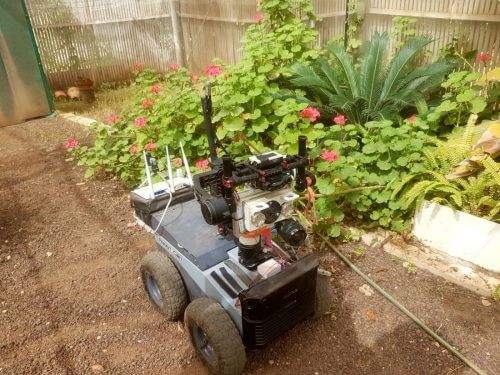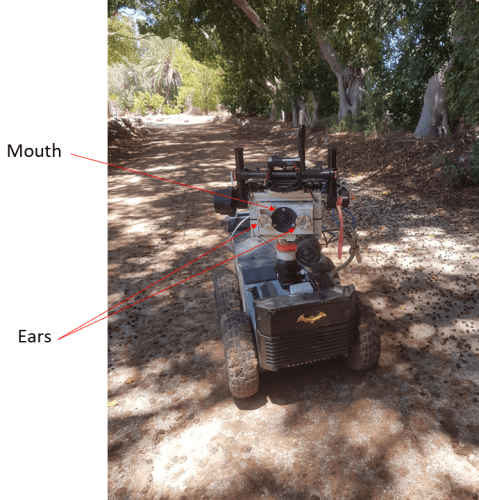Researchers from Tel Aviv University have built an autonomous robot that navigates its way using echo tracking - like a bat * The robot, named "Robotlf", is the first in the world to use bat sonar to navigate its surroundings; The revolutionary development solves one of the most difficult problems in the world of robotics - and also sheds new light on the lives of real bats * The results of the project were published today, September 6.9.18, XNUMX, in the journal PLOS Computational Biology

Researchers from Tel Aviv University have built a fully autonomous robot that navigates using echo tracking - similar to bats. The robot, named "Robotlf" in Israel, was built by research student Itamar Eliakim under the guidance of Dr. Gabor Kosha from the School of Mechanical Engineering and Prof. Yossi Yuval from the Department of Zoology and the Segol School of Neuroscience at Tel Aviv University. The results of the groundbreaking project, supported by the Ministry of Science, are published today (Thursday) in the journal PLOS Computational Biology.
Bats use echolocation to map new environments, and at the same time navigate their way by producing sounds and listening to the various echoes that return to them - thus solving, permanently and with astonishing ease, one of the most complex problems in robotics. Many theoretical models have been proposed to explain how the owls do this, but so far few attempts have been made to actually build an autonomous sonar robot.
"To the best of our knowledge," says Prof. Yuval, "this is the first autonomous robot in the world that uses the biology of bats to navigate its way and map the environment using only echo localization. This technology, which imitates the biology of the bat, has great potential in robotics. This is a one-of-a-kind interdisciplinary project, which began when Itamar Elikim was a fellow student of mine in the zoology department - and of Prof. Gabor Kosha of mechanical engineering."

The robot, which took about two years to build, is equipped with an ultrasonic speaker that imitates the bat's mouth and produces sounds at the frequencies characteristic of the bat's transmissions. Robotlf also has two "ears", meaning two microphones that pick up ultrasonic frequencies. He moves through unfamiliar environments in the open air, navigating his way - in real time - using only the sounds. The robot draws for itself the boundaries of the objects in space, classifies them using a computer and thus produces an accurate map of its environment while avoiding obstacles.
"Today, robots navigate mainly using a vision-like sense," explains Prof. Yuval, "that is, using cameras and lasers. We proved that it is possible to do interesting things with Sonar as well. The sense of sight is an amazing sense, but it has flaws. For example, when a robot navigates in the dark, dust or smoke - like under rubble or in a fire. Vision has other disadvantages in the world of robotics. Transparent walls, for example, confuse robots. Robots also have trouble seeing into obstacles like bushes. Our Robotlf just walks through the bush because he can hear through the leaves. This development may have great consequences in the development of multi-sensory robots, as we humans are multi-sensory."
In addition, claims Prof. Yuval, the robot also sheds light on the lives of real bats: "The project is a biologically inspired project. If we wanted to build the best machine, we would build it differently. For example, with more ears. But we limited ourselves to bats as they are in nature, and I as a zoologist claim that we also learned something about bats in the process. It's one thing to work with computer simulations, and quite another to try to build a bat from scratch. The robot helps us better understand the bat's sensory priorities, the way bats decode signals in real time."
These days, Elikim and Prof. Yuval are working on improvements to Robotlf. "Many of the algorithms can still be made more precise," explains Prof. Yuval. "In addition, we have already started working on building a group of robots that will navigate together - as some bat species do in nature. And of course we are working on making the robot fly like a real bat."
More of the topic in Hayadan:

One response
I know of several projects of an independent vehicle of navigation using radar which in practice is the exact same thing only without the buzz word: "biological"